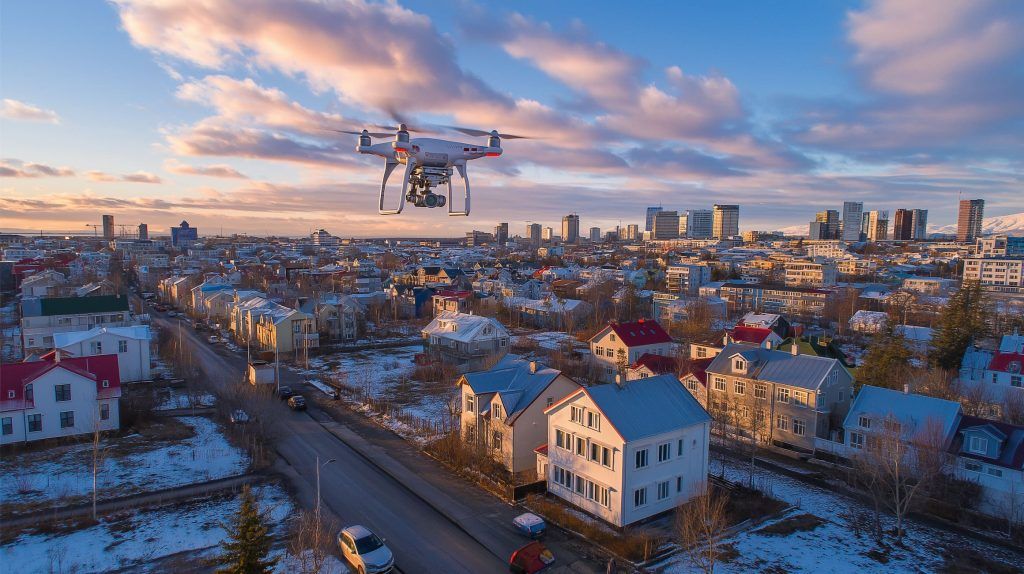- Historic Shift: Poland’s space industry has evolved from Soviet-era experiments to a dynamic national sector after joining the European Space Agency in 2012 [1] [2]. The country’s first home-built satellite launched that same year, marking the dawn of a new era [3].
- Market Growth: Today the Polish space sector comprises 300–400 organizations and ~12,000 employees, mostly innovative small businesses [4]. Since 2015, Polish entities have secured almost 600 ESA contracts worth €270 million [5]. Government investment is surging – Poland tripled its ESA contributions for 2023–2025 to over €200 million in optional programs [6], aiming to boost local industry.
- Rising Capabilities:Poland’s largest-ever satellite, EagleEye, was built domestically and launched in 2023 on a SpaceX rocket [7], providing high-resolution Earth images. A follow-on CAMILA constellation of at least three satellites (optical and radar) is now under development via a €52 million ESA contract – Poland’s biggest space contract to date [8] [9]. These systems will give Poland independent imaging for agriculture, environment, and national security.
- Defense Drive: Geopolitical tensions have accelerated Poland’s “space security” efforts. The government purchased two high-resolution spy satellites from Airbus in a $612 million deal [10], and in 2025 it inked a €200 million agreement with ICEYE (co-founded by a Polish engineer) for a SAR reconnaissance satellite fleet [11] [12]. Officials laud these deals for giving Poland “full independence in radar reconnaissance” with world-class technology [13].
- Key Players: Poland’s space ecosystem now spans 50+ specialized companies alongside global primes. Creotech Instruments leads in satellite manufacturing (building EagleEye and spearheading CAMILA) [14] [15]. SatRevolution deploys nanosatellite constellations with international partners [16]. Firms like Astronika and Sener Polska supply components to ESA missions (e.g. Jupiter probe JUICE) [17]. Startups such as KP Labs (AI for satellites) and Scanway (optical systems) are on the rise, while foreign giants Airbus, Thales Alenia, OHB and others have set up Polish branches and partnerships.
- Government Support: The Polish Space Agency (POLSA), established in 2014 [18] [19], coordinates national space policy and bridges industry with science [20]. Poland’s 2017 Space Strategy set ambitious goals – notably a 3% share of Europe’s space economy by 2030 [21] – and stresses dual-use satellite tech for security. Poland is a committed ESA member (now 8th in optional-budget rank [22]) and joined NASA’s Artemis program in 2021 [23], contributing Polish-built sensors for the Orion spacecraft [24]. A National Space Programme has been drafted to fund strategic projects, but its full implementation remains pending [25].
- Recent Milestones (2023–2025): In 2023 Poland surprised observers by boosting ESA funding and signing new bilateral deals, signalling “stellar ambitions” [26] [27]. The EagleEye satellite’s successful launch proved domestic know-how [28]. By late 2024, a Polish-led consortium won a contract to design the Twardowski lunar mission, which will orbit the Moon to map resources – a breakthrough showcasing Poland’s leadership in an ESA exploration project [29]. In 2024 Poland also agreed to send a package of Polish science experiments to the ISS (studying astronaut psychology, AI in microgravity, algae for life support, etc.) [30]. And in 2025, Polish astronaut Sławosz Uznański is slated to fly to the ISS – the nation’s first person in space in nearly 45 years [31] [32].
- Key Sectors: Poland’s space market spans multiple segments:
- Earth Observation: A top priority, with national imaging satellites (optical and radar) being deployed for civilian and military use [33] [34]. Polish data platforms (e.g. CloudFerro’s CREODIAS) process Copernicus satellite data for users.
- Satellite Manufacturing: Poland now builds complete satellites and subsystems. Creotech’s HyperSat platform enables producing 10–20 small satellites per year [35], and dozens of firms supply electronics, software, and components for ESA and commercial missions [36] [37].
- Downstream Applications: Polish startups leverage satellite data for services in agriculture, climate monitoring, navigation, and telecom. The industry’s software talent is a strength – many companies specialize in mission control software and data analytics [38].
- Telecommunications: Poland is planning its first national telecom satellite for secure communications [39]. Meanwhile, Polish engineers contribute to European telecom projects, and the country hosts ground stations and an ESA SAT-AIS (ship tracking) base.
- Defense and Security: Space is now seen as the “fifth domain” of warfare, and Poland is investing accordingly [40] [41]. Dual-use satellites (observation, navigation, secure comms) are being acquired to support NATO operations and national defense. Poland participates in EU space security initiatives (SSA, GovSatCom) and is a member of the NATO Space Centre.
- Launch Services: While Poland lacks an orbital launch site, it is developing rockets. A state institute’s Bursztyn sounding rocket was the first Polish-built vehicle to cross the Kármán line (100 km) [42]. Private company SpaceForest is testing its Perun hybrid rocket, aiming for suborbital flights by 2026 and eventually small satellite launches [43]. These projects, though still R&D-stage, signal Poland’s intent to achieve independent launch capability for small payloads.
- R&D and Education: Poland’s scientific institutions have deep space heritage. The Space Research Centre (CBK PAN) founded in 1976 remains central, contributing instruments to missions like Rosetta and JUICE [44]. Top universities run cubesat programs (Warsaw, Wrocław, Gdańsk) producing student satellites and talent. An ESA-backed Space Technology Center opened at AGH University in Kraków to foster innovation [45] [46]. This growing talent pool supports the industry’s expansion.
- Investment and Funding: Public funding for space has risen dramatically. Poland’s total space budget (ESA, EU and national) was €65.5 million in 2021 [47] and is increasing with the new ESA commitments. The government also co-funds projects like the CAMILA constellation via ESA to ensure technology transfer to Polish firms [48]. However, a dedicated national space fund is still awaited – a 2019–2021 program was approved but never financed [49]. Industry leaders urge launching a sustained Polish Space Program to complement ESA funds, noting that reaching the 3% market share goal would require on the order of €600 million in annual contracts – far above current levels [50]. On the private side, Poland’s space startups are beginning to attract venture capital. For example, Creotech Instruments became the first Polish space company to list on the stock exchange, raising capital to expand manufacturing [51]. Early-stage firms like Orbital Matter (in-space manufacturing) have secured seed funding from regional VCs, and accelerator programs (e.g. Space3ac in Gdańsk) nurture spacetech startups. Additionally, state-backed companies in defense (PGZ) are partnering with space firms (as seen in the ICEYE deal) to invest in domestic capacity [52] [53].
- Poland’s Role in ESA and International Missions: Over a decade of ESA membership has integrated Poland into Europe’s space supply chain. Polish companies and institutes have contributed to 80+ ESA and NASA missions, from Earth observation satellites to deep-space probes [54]. The country’s financial contribution to ESA now exceeds €40 million per year (mandatory + optional) [55], and Poland enjoys a high “geographic return” of ~94% – meaning most of its ESA investment funnels back to contracts for Polish entities [56] [57]. Poland is also part of EU space programs like Galileo (hosting an EU Galileo Reference Centre) and Copernicus (providing data services). In 2022, a Polish engineer S. Uznański was selected for the ESA Astronaut Reserve, underlining Poland’s growing human presence in space initiatives [58].
- Expert Insights: Industry experts are optimistic yet candid about challenges. “After ten years of making first steps in the European space industry, we already have the experience and competence to join the technology race with the biggest countries,” says POLSA President Grzegorz Wrochna [59], highlighting how far Poland has come. At the same time, professionals like Kinga Gruszecka of the Polish Space Professionals Association note that the national space strategy is “broad and lacking specific detail” on execution [60]. Without a clear plan, Polish firms often remain subcontractors rather than prime contractors in big projects [61] [62]. “There is a bit of chaos…we do not know whether [the national program] is on hold and funding goes to ESA only,” says Paweł Paśko of PIAP Space, calling for clearer domestic direction [63]. Still, he views the government’s new ambitions – such as launching a Moon mission by 2030 – as positive: “I previously felt a lack of vision… [this] is a step forward,” Paśko observes [64]. Experts agree that Poland’s increased spending can “propel [its] economy to a higher level”, provided the money is coupled with strategic focus and workforce development [65] [66].
- Outlook to 2030: The next five years are pivotal for Poland’s space market. By 2030, Poland aims to have its own high-resolution satellite constellation operational (via CAMILA and follow-ons) and to be a key supplier in European programs [67] [68]. A Polish Moon exploration instrument (like the in-development MIRARES device for lunar mining) could fly with NASA’s Artemis missions, leveraging Poland’s mining expertise to carve a niche in space resources [69] [70]. The Polish government’s vision includes possibly sending a Polish crew or payload to the Moon by 2030 [71], in cooperation with international partners. Domestically, the number of space companies is expected to grow, and the workforce could swell beyond 20,000 skilled professionals as new startups emerge and foreign investors team up with Polish talent. Achieving the targeted 3% of Europe’s space economy is ambitious – it will require sustained public funding and competitive innovation – but even partial success would mean billions in revenues and thousands of high-tech jobs. Challenges remain: Polish stakeholders acknowledge that without a fully funded national program and clearer long-term priorities, some 2030 goals may slip [72] [73]. The introduction of an actionable Space Programme (with defined budgets and timelines) is seen as crucial to maintain momentum. Additionally, Poland will need to continue fostering “brain circulation” – attracting young engineers and enticing experienced Polish space experts abroad to return home [74] [75] – to build the human capital needed for ambitious projects.
- Conclusion: In summary, Poland’s space and satellite sector is leaping from obscurity to the forefront of New Space in Central Europe. With a supportive government, a thriving cadre of startups and research institutes, and international partnerships, Poland is transforming into a serious space market player. The period 2023–2025 has already seen record contracts and first-of-their-kind achievements, from home-grown satellites in orbit to deals securing Poland’s own reconnaissance constellation. By 2030, Poland could be reaping the rewards: greater economic returns from the space economy, enhanced national security via autonomous satellite systems, and a seat at the table in humanity’s next great adventures in space. As one official put it, this is about “strengthening our resilience and building capabilities in advanced Earth observation – for civil, economic and security needs” [76] [77]. In the process, Poland’s journey from a communist-era space footnote to a 21st-century space industry success story may well become a model for other emerging space nations – proving that even late starters can shoot for the stars with the right mix of vision, investment, and innovation.
Sources: The information and quotes above are drawn from a variety of credible sources, including government and industry reports, news articles, and expert analyses: historical data from POLSA and Wikipedia [78] [79]; market figures from the Polish Economic Institute and Space Agency updates [80] [81]; contract and funding news from Science Business and trade ministry releases [82] [83]; developments like EagleEye and CAMILA from Poland’s Ministry of Development and Creotech/ESA announcements [84] [85]; defense deals via SpaceIntel and ICEYE press releases [86] [87]; company activities and mission contributions via PolandWeekly and NotesfromPoland [88] [89]; and expert commentary from industry leaders reported by Science|Business and others [90] [91]. These sources provide a comprehensive, up-to-date picture of Poland’s space sector trajectory.
References
1. en.wikipedia.org, 2. polsa.gov.pl, 3. en.wikipedia.org, 4. ine.org.pl, 5. www.trade.gov.pl, 6. www.trade.gov.pl, 7. www.trade.gov.pl, 8. notesfrompoland.com, 9. notesfrompoland.com, 10. www.spaceintelreport.com, 11. www.prnewswire.com, 12. www.prnewswire.com, 13. www.prnewswire.com, 14. ine.org.pl, 15. notesfrompoland.com, 16. en.wikipedia.org, 17. polandweekly.com, 18. en.wikipedia.org, 19. en.wikipedia.org, 20. universeh.eu, 21. sciencebusiness.net, 22. www.trade.gov.pl, 23. en.wikipedia.org, 24. en.wikipedia.org, 25. sciencebusiness.net, 26. sciencebusiness.net, 27. sciencebusiness.net, 28. www.trade.gov.pl, 29. polandweekly.com, 30. polandweekly.com, 31. universeh.eu, 32. notesfrompoland.com, 33. notesfrompoland.com, 34. en.wikipedia.org, 35. ine.org.pl, 36. ine.org.pl, 37. notesfrompoland.com, 38. ine.org.pl, 39. ine.org.pl, 40. ine.org.pl, 41. ine.org.pl, 42. ine.org.pl, 43. ine.org.pl, 44. polandweekly.com, 45. universeh.eu, 46. universeh.eu, 47. polsa.gov.pl, 48. notesfrompoland.com, 49. sciencebusiness.net, 50. sciencebusiness.net, 51. notesfrompoland.com, 52. www.prnewswire.com, 53. www.prnewswire.com, 54. universeh.eu, 55. universeh.eu, 56. universeh.eu, 57. www.trade.gov.pl, 58. universeh.eu, 59. polandweekly.com, 60. sciencebusiness.net, 61. sciencebusiness.net, 62. sciencebusiness.net, 63. sciencebusiness.net, 64. sciencebusiness.net, 65. universeh.eu, 66. sciencebusiness.net, 67. notesfrompoland.com, 68. notesfrompoland.com, 69. sciencebusiness.net, 70. sciencebusiness.net, 71. sciencebusiness.net, 72. ine.org.pl, 73. sciencebusiness.net, 74. sciencebusiness.net, 75. sciencebusiness.net, 76. notesfrompoland.com, 77. notesfrompoland.com, 78. polsa.gov.pl, 79. en.wikipedia.org, 80. www.trade.gov.pl, 81. www.trade.gov.pl, 82. sciencebusiness.net, 83. www.trade.gov.pl, 84. www.trade.gov.pl, 85. notesfrompoland.com, 86. www.spaceintelreport.com, 87. www.prnewswire.com, 88. polandweekly.com, 89. notesfrompoland.com, 90. sciencebusiness.net, 91. sciencebusiness.net





